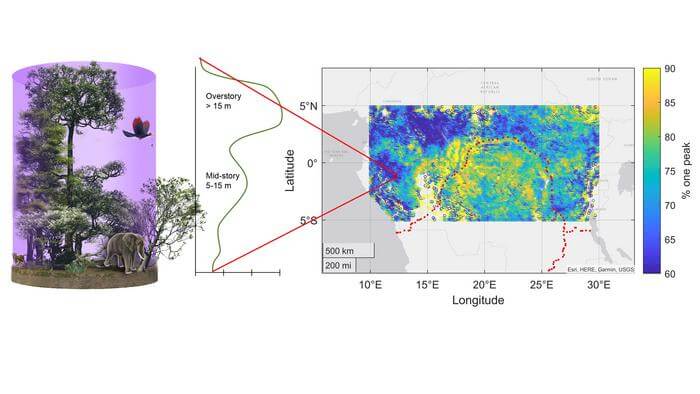NASA’s Global Ecosystem Dynamics Investigation (GEDI), a space laser, has provided unprecedented insights into the structure of the world’s rainforests, shedding light on the elusive canopy where the majority of Earth’s species reside.
The laser’s findings were detailed in a recently published paper titled “Tropical forests are mainly unstratified especially in Amazonia and regions with lower fertility or higher temperatures,” authored by researchers from the United States, the United Kingdom, and Singapore.
Christopher Doughty, a professor in NAU’s School of Informatics, Computing, and Cyber Systems and the first author of the study, emphasized the significance of this research in expanding our knowledge of tropical ecosystems. Doughty explained, “Most of the world’s species live in tropical forests and most of those make use of the canopy, and yet, we know so little. Rainforest structure matters because it controls how animals access resources and escape predators, and these findings will help us understand tropical forest animals’ susceptibility to climate change.”
The study marks a significant milestone in the understanding of forest canopies, which have long remained enigmatic. Early descriptions of tropical forests by Western visitors characterized them as nature’s rejection of empty spaces, with vegetation eagerly occupying every available area with stems and leaves. As scientists delved deeper into the study of tropical forests, they classified the abundant flora into different layers, comprising a dense upper crown, a thick mid-layer, and a thin intermediary layer. However, this observation was limited to a few extensively researched locations, leaving the structure of most tropical forests largely unexplored.
This knowledge gap was bridged by GEDI, the Global Ecosystem Dynamics Investigation, which boasts a crucial advantage over many other satellites—its ability to measure three-dimensional canopy structure. Hao Tang, a professor in the Department of Geography at the National University of Singapore (NUS) and a co-author of the paper, highlighted this distinction. Tang, who also serves as a principal investigator at the NUS Centre for Nature-based Climate Solutions, stated, “Conventional satellites, while providing valuable data on land cover and canopy greenness, often lack the detailed vertical information offered by GEDI. This vertical information is crucial for understanding ecosystem dynamics, carbon storage, and biodiversity that cannot be easily seen from typical satellite images.”
Launched by NASA in late 2018, GEDI employs an imperceptible laser fired from the International Space Station, scanning Earth’s forests thousands of times daily. By analyzing the energy reflected back to the satellite, GEDI generates precise 3D maps that reveal the locations and transformations of leaves and branches within a forest. These maps aid researchers in comprehending the amount of biomass and carbon stored in forests and the losses incurred during disturbances, providing vital insights into Earth’s carbon cycle and its changing dynamics.
Doughty, Tang, and their fellow authors scrutinized GEDI data across all tropical forests, uncovering that the canopy structure was simpler and more exposed to sunlight than previously believed. Additionally, the data indicated that the majority of tropical forests, such as 80 percent of the Amazon and 70 percent of Southeast Asia and the Congo Basin, exhibited a peak in leaf density at 15 meters, contrary to the conventional belief that the canopy top housed the most foliage. While forest characteristics vary, a consistent finding emerged from every scenario—the deviation from optimal conditions, such as lower fertility or higher temperatures, resulted in shorter, less stratified forests with lower biomass.
Doughty expressed his surprise at the prevalence of this structure type, remarking, “It was really surprising to see the dominance of this structure type because it differs from what we had learned in the classic textbooks on the topic. These findings will not only help us understand how the millions of species that live in a rainforest canopy might acclimate to changing temperatures but also how much carbon these forests hold and how effective they are in combating climate change.”


